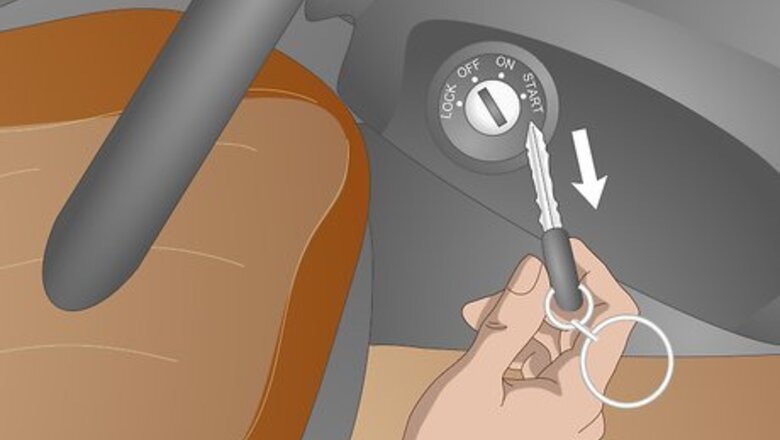
views
- Remove the key from the ignition, or place the keyfob far from the car. Set all lights and electronics to “off” to avoid a power surge when reconnecting the battery.
- Slide the positive cable’s connector onto the battery’s positive terminal and tighten it with a wrench. Then do the same for the negative connector and negative terminal.
- Insert your key and start the car to confirm that the battery is connected properly. If it doesn't start, check the cables, tighten any loose connections, and try again.
Connecting the Cables to the Battery Terminals
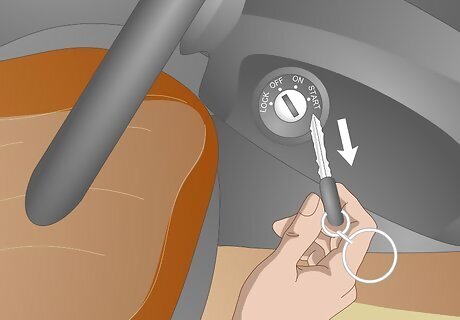
Keep the key out of the ignition and turn all electronics off. Set your headlights, dome light, and other electronics to “off.” Otherwise, a power surge may occur when you reconnect the battery, possibly damaging the car’s electrical system. If your car has a start button and keyless ignition system, unlock all doors and keep the keyfob away from the vehicle to prevent the electronics from starting. In many vehicles, the electronics will automatically turn on if the key is inserted into the ignition, or if the keyfob is within a certain distance of the car. Manually unlock all the doors to avoid getting locked out. Your power locks may not work until the battery is reconnected.
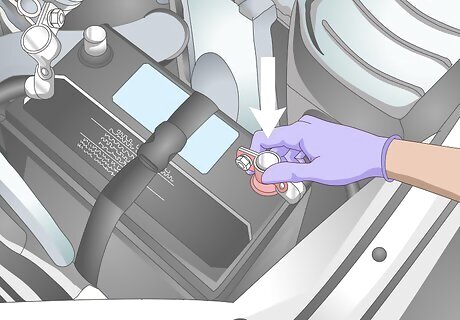
Slide the positive battery cable onto the positive terminal. The positive cable will have a circular red connector, while the positive battery terminal (also called a battery post) is labeled with a “+” sign and may also be marked in red. The red connector slides onto the positive battery terminal like a ring sliding onto a pole. Slide the connector onto the terminal with your hand until the connector lies flat against the battery. Wear rubber gloves to avoid electric shocks, and never touch both terminals at the same time. If the connector won't slip over the terminal post, use a wrench to loosen the bolt on the connector so that it fits around the post.
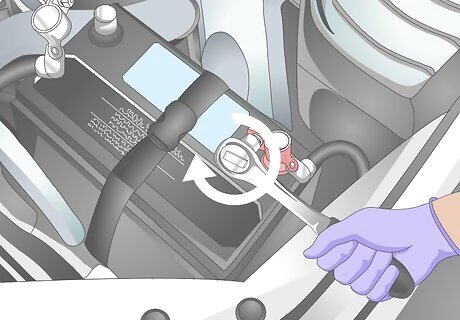
Use a wrench to tighten the connector onto the post. Locate the bolt on the flap of metal attached to the circular red connector. Turn the bolt clockwise to tighten the connector and secure it to the battery post. Keep tightening until the connector is firmly clamped and doesn’t move easily. This will prevent the connector from coming loose due to vibrations from driving. Wiggle the wire on the terminal a bit with your hand to make sure it's secure. If it moves at all, tighten the connector further. If the battery’s design makes using a socket wrench difficult, use an open-ended wrench instead.
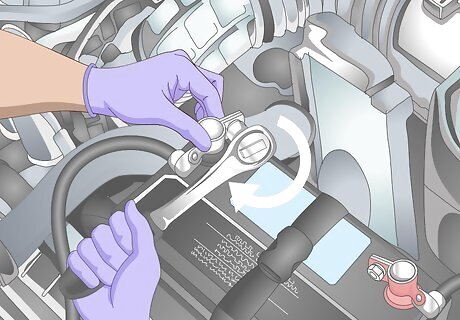
Connect the negative cable to the other post and tighten it in place. The negative cable has a black circular connector, while the negative battery post is labeled with a “-” sign and is sometimes marked in black. Slide the black circular connector onto the negative battery post, just as you did for the other post. Use your wrench to tighten the connector until it no longer moves easily. If either cable can't reach the appropriate terminal, your battery may not be oriented correctly. If this occurs, disconnect the cables, remove the hold-down mechanism, and remove the battery. Then install the battery again in an orientation that allows the cables to reach the terminals.
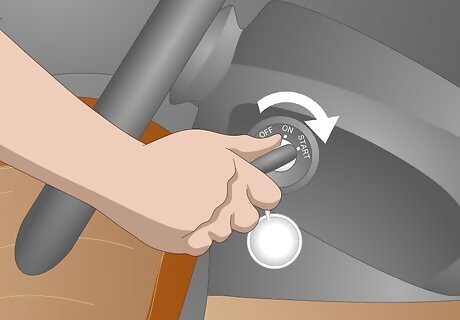
Insert the key into the ignition and start the car. With the battery connected, the dome light should come on when you open the driver's side door, or when the keyfob comes close to the car. Insert the key into the ignition and turn it to start the vehicle, or press “Start” if your car has a keyless ignition system. The vehicle should start and run normally. If the vehicle does not start, check the connections at the battery, the alternator, and the location where the negative cable touches the body. If any connections have come loose, attach them and try again. If all connections are in place, try starting the car a few more times. If your car still won’t start, the battery may be dead. Try jump-starting the car to charge the battery, or take your vehicle to a mechanic to check for electrical problems.
Cleaning and Inspecting the Battery and Connections
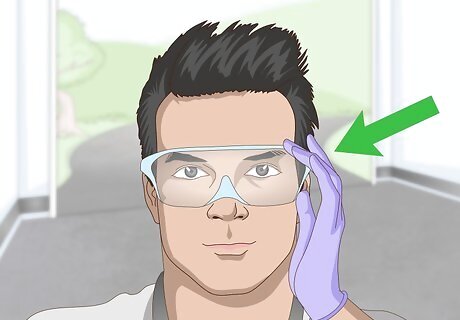
Put on safety glasses and rubber gloves to protect your skin and eyes. Choose worker’s rubber gloves to prevent electric shocks, or to avoid acid burns from battery leaks. Likewise, the safety glasses will protect your eyes from chemicals in the battery. If you have safety goggles, you can wear them instead of safety glasses. Goggles offer extra protection.
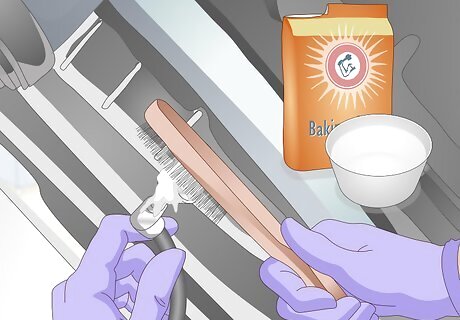
Use a wire brush to scrub the battery terminals with baking soda and water. Mix 1 cup (272 g) of baking soda with ⅓ cup (80 mL) of water to create an abrasive paste. Spread the paste onto your wire brush and scrub the terminals thoroughly to remove any corrosion or buildup. Use a dry rag to remove the paste when you're done. The baking soda/water paste will scrape away rust and old oil.
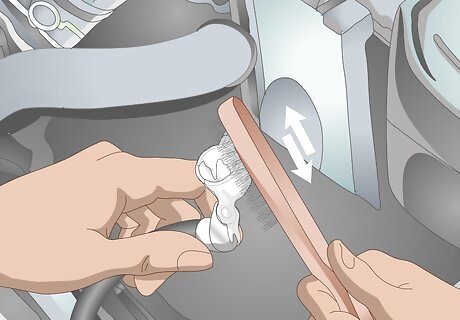
Scrub and remove any rust or debris from the battery cables. Spread more baking soda/water paste onto your wire brush, then scrub the metal connectors at the end of the cables. Remove all rust or buildup to ensure electricity flows freely when the connectors are reattached to the battery terminals. Use a damp rag to remove the paste when you finish. If the outer surfaces of your wire connectors are painted, leave the paint intact and scrub the inside of the connectors to remove debris.
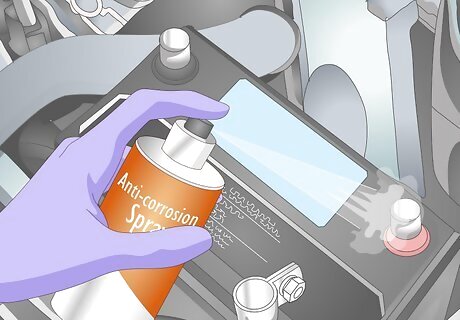
Apply anti-corrosion spray to the battery posts and connectors. Apply plenty of spray to prevent rust or debris from accumulating again in the future. Spray both the positive (+) and negative (-) terminals of the battery, as well as the inside of the wire connectors. Use a clean rag to wipe off excess spray. Choose an electrically conductive corrosion protection spray designed for car batteries. You can also buy corrosion protection cream, instead of spray. Use a clean rag to apply the cream to avoid electric shocks.
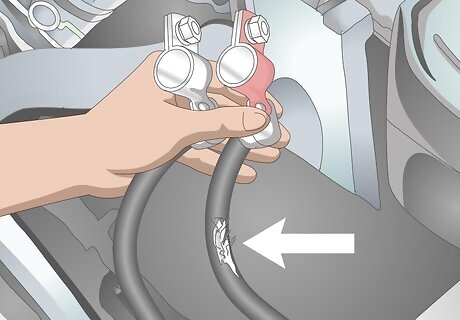
Check the cables for cracks and other damage. Inspect both cables closely. The positive cable's end connector is often either painted red or has a red plastic clip attached to it. The second cable is a ground cable, which connects the negative terminal of the battery to the body of the car. Look out for torn insulation or frayed wires. These can cause electrical shorts, which can damage your battery or the car’s electronics.

Replace cables if they’re damaged. To replace the positive cable, use a socket wrench to remove the nut that connects the cable to the alternator. Slide the loop at the end of the cable off of the nut, then slide the replacement cable’s loop in its place and secure it with the nut. To replace the negative cable, remove the bolt that attaches it to the body of the car, then swap the new cable in its place and screw the bolt back in. Have a mechanic replace the cables if you prefer not to do so yourself. If neither cable is damaged, you can skip this step.
Removing & Reinstalling the Battery
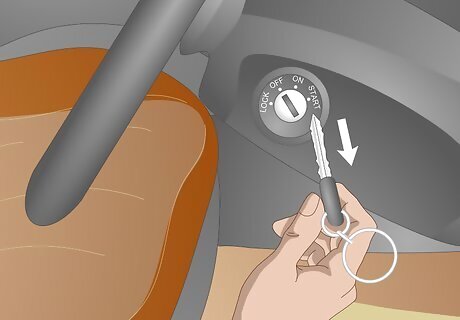
Turn off the car’s engine and remove the key from the ignition. Double-check that all lights and electronics are turned off. If your car has a keyless ignition system with a start button, unlock the doors and keep the keyfob far away from the vehicle. Lower the windows before turning off the car to avoid locking yourself out. The power locks may not work after you disconnect the battery.
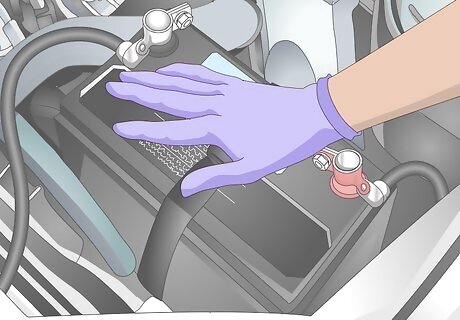
Locate your car’s battery. Most car batteries are found in the engine compartment. However, some cars have their batteries in the trunk or behind a plastic panel in the passenger compartment. Check your vehicle's owner's manual if you can’t locate the battery, or check the manufacturer’s website.
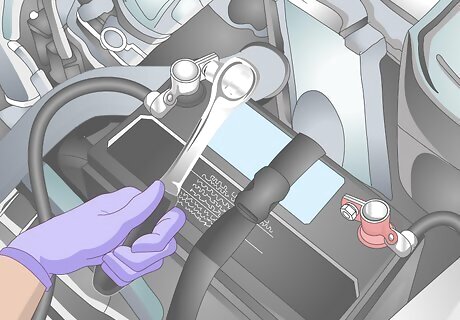
Disconnect the negative cable from the negative battery post. While wearing rubber gloves, use a wrench to loosen the black connector on the negative cable. Pull the connector off the post and set it aside inside the engine compartment, away from the battery. Avoid letting the cable make contact with the battery terminals. The negative cable will have a black connector, while the positive cable will have a red connector. Avoid accidentally disconnecting the positive (red) cable first, as this could cause short circuits and electric shocks.
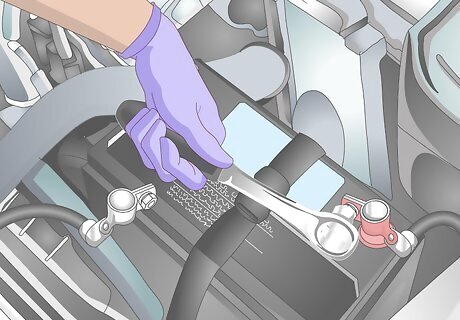
Disconnect the positive cable from the positive battery post. Loosen the red connector and pull it off the post, just as you did for the other cable. Set this cable aside away from the battery and black cable. Use caution to prevent the cable from touching the battery terminals. Remember that the positive cable always has a red connector.
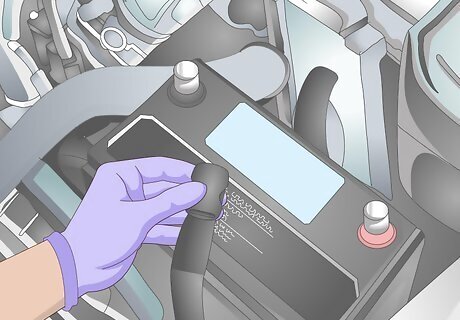
Remove the battery hold-down mechanism. The hold-down mechanism secures the battery in the battery tray. Some cars use metal hooks that are loosened by hand. Other cars use metal or rubber straps that are clipped into place or bolted down. Use one of the following procedures to undo the mechanism: If your car uses a strap, disconnect the strap from the side of the battery where it is hooked in place. If the strap is held on by a bolt, use a ratchet to loosen the bolt, then remove the strap. If your car has a hook, rotate the hook by hand or use pliers to uncook the battery. If the hook includes a bolt, use pliers to loosen the bolt until it comes off. If you’re having trouble, check your car’s manual or the manufacturer's website for specific instructions for removing the battery.
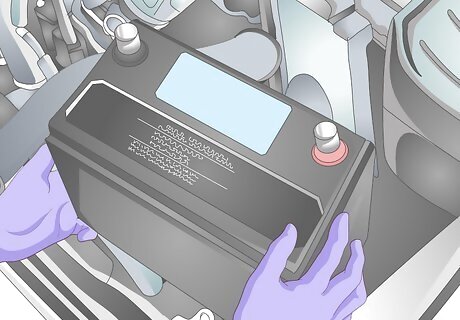
Remove the battery by carefully lifting it out of the battery tray. Firmly grab the battery by its sides and slowly raise it out of the battery tray. Set the battery down on a nearby table or bench. Avoid touching the battery terminals to prevent electric shocks. Car batteries can weigh over 40 lbs (18 kg), so be careful not to drop it. Note the battery’s orientation before you remove it. Most car batteries have their terminals close to one edge of the battery. In the next steps, you’ll need to reinstall the battery (or install a new battery) in the same orientation.
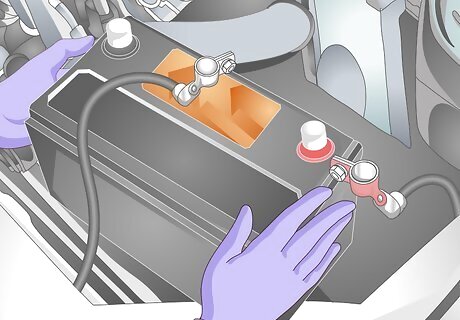
Position the battery so the wires can reach the terminals. Hold the battery above the battery tray, with the terminals in the same orientation as they were before the battery was removed. Do this whether you are installing the same battery or replacing it with a new one. If you install the battery in the wrong orientation, the cables may not reach the terminals.
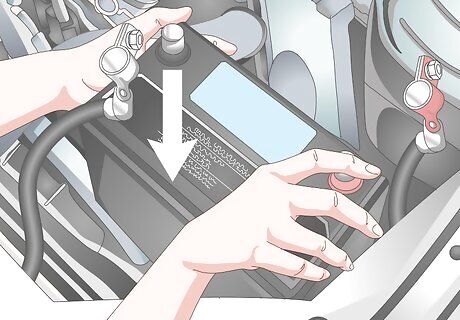
Use both hands to lower the battery into the tray. Grip the battery from the sides as you lower it into its tray, being careful not to pinch your fingers as you do. Remember that car batteries can way weigh 40 pounds (18 kg) or more. Use caution to avoid dropping the battery and injuring yourself. Make sure there's nothing in the tray, like tools or debris, before you lower the battery into it. If needed, tuck the battery cables off to the side before you lower the battery into the tray. This keeps them from getting in the way.
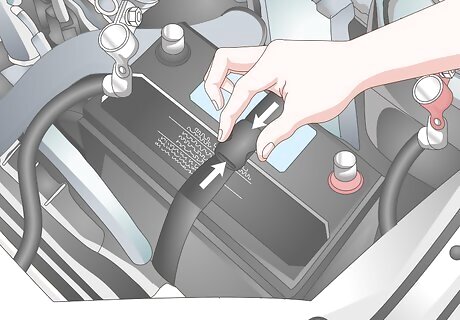
Reinstall the battery hold-down mechanism. If your car uses a strap, pull the strap over the battery and secure it on the other side. If the strap is held on by a bolt, use a ratchet to tighten the bolt and hold the strap in place. If your car has a hook, rotate the hook by hand or use pliers to secure the battery. If the hook includes a bolt, use pliers to adjust the bolt and move the hook into place. If you’re having trouble, check your car’s manual or the manufacturer's website for specific instructions for securing the battery.




















Comments
0 comment